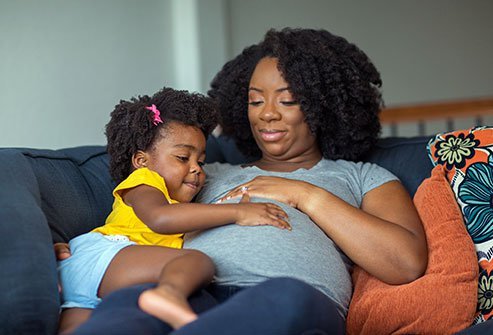What Is Inside a Mother’s Womb?
Your womb or uterus is a hollow, pear-shaped muscular organ in the pelvis. This is where fertilization of an egg (ovum), implantation (hosting) of the resulting embryo, and development of a baby takes place.
Your uterus can stretch exponentially to accommodate a growing fetus, and it undergoes strong contractions to push the baby out during childbirth. But what is inside of it?
Understanding the anatomy of the uterus
The uterus is made of three distinct layers:
- Perimetrium: Outermost layer of the tissue that is made of epithelial cells.
- Myometrium: Middle layer that is made of smooth muscle tissue.
- Endometrium: Inner lining that builds up over the course of a month and is shed if pregnancy does not occur.
The uterus sits behind the urinary bladder and in front of the rectum. It has four sections:
- Fundus: Broad curved area at the top and widest portion of the organ that connects to the fallopian (ovarian) tubes.
- Corpus or the body: Main part of the uterus that starts directly below the level of the fallopian tubes and continues downward, becoming increasingly narrower.
- Isthmus: Lower narrow part of the uterus.
- Cervix: Lowest part of the uterus. Tubular in shape, the cervix opens into the vagina and dilates (widens) to allow the passage of the baby.
What grows inside the uterus during pregnancy?
- Amniotic sac: Thin-walled sac that surrounds the fetus during pregnancy. The sac is filled with liquid produced by the fetus (amniotic fluid). There is a membrane that covers the fetal side of the placenta (amnion). This protects the fetus from injury. It also helps regulate the temperature of the fetus.
- Fetus: Unborn baby from the eighth week of fertilization until birth.
- Placenta: Organ that grows only during pregnancy. The fetus takes in oxygen, nutrients, and other substances from the placenta and gets rid of carbon dioxide and other waste products.
- Umbilical cord: Rope-like cord connecting the fetus to the placenta. It contains two arteries and a vein. It carries oxygen and nutrients to the fetus and waste products away from the fetus.
How does the uterus function?
During a normal menstrual cycle, the endometrial lining of the uterus goes through a process called vascularization during which tiny blood vessels grow and become firmer. This causes the lining to get thicker in preparation for fertilizing an egg released during that cycle. If this does not occur, the uterus sheds the lining as a menstrual period.
If conception occurs, the fertilized egg (embryo) burrows into the endometrium, and this is where the maternal portion of the placenta develops. As pregnancy progresses, the uterus grows, and the muscular walls stretch to accommodate the developing fetus and amniotic fluid.
During pregnancy, the muscular layer of the uterus begins contracting on-and-off in preparation for childbirth. These “practice” contractions (Braxton Hicks contractions) resemble menstrual cramps; some women don't even notice them. After a baby is born, the uterus continues to contract to expel the placenta.
What are abnormal tissues that can develop in the womb?
Sometimes, a woman’s uterus may develop abnormal tissues such as:
- Fibroids (noncancerous tumors)
- Polyps
- Tumors (cancer)
- Adhesions (in the case of uterine tuberculosis or recurring STD)
- Choriocarcinoma (a tumor that may develop from the cells that are supposed to become placenta)

